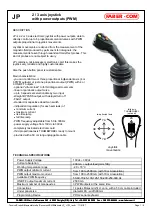
72
Rockwell Automation Publication 2080-UM002L-EN-E - November 2021
Chapter 6 Program Execution in Micro800
In addition to the User Fault Routine, Micro800 controllers also support two
Selectable Timed Interrupts (STI). STIs execute assigned programs once every
set point interval (1…65535 ms).
The Global System Variables associated with cycles/scans are:
•
__SYSVA_CYCLECNT – Cycle counter
•
__SYSVA_TCYCURRENT – Current cycle time
•
__SYSVA_TCYMAXIMUM – Maximum cycle time since last start.
Execution Rules
This section illustrates the execution of a program. The execution follows four
main steps within a loop. The loop duration is a cycle time for a program.
When a cycle time is specified, a resource waits until this time has elapsed
before starting the execution of a new cycle. The POUs execution time varies
depending on the number of active instructions. When a cycle exceeds the
specified time, the loop continues to execute the cycle but sets an overrun flag.
In such a case, the application no longer runs in real time.
When a cycle time is not specified, a resource performs all steps in the loop
then restarts a new cycle without waiting.
Optional Module
Normally before the read inputs step, the controller will verify the presence of
any configured plug-in and expansion I/O modules. If a plug-in or expansion
I/O module is missing, the controller will fault. In Connected Components
Workbench software release 10 or later, an Optional Module configuration
option is added to prevent a missing plug-in I/O or expansion I/O module
from faulting the controller if enabled. This option can be enabled separately
for each plug-in I/O or expansion I/O module.
1. Read inputs
2. Execute POUs
(1)
/programs
3. Write outputs
4. Housekeeping (data log, recipe, communications)
(1) Program Organizational Unit.
4
1
2
3
1
2
3
ATTENTION:
If the optional module feature is enabled, use the MODULE_INFO
instruction to verify that the module is present because the controller will not
fault if the module is missing.
















































